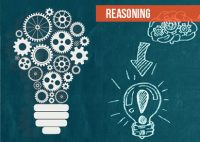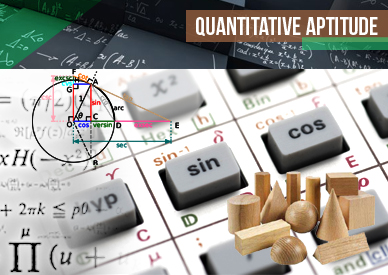Mathematical Operation For SBI PO Set – 9

Mathematical Operation For SBI PO Set – 9
1) If the expressions ‘E < J ≤ H > Z’, ‘H ≤ Y’ and ‘E > F’ are true, which of the following conclusions will be definitely false?
a) F < Y
b) Y > E
c) F < H
d) J ≤ Y
e) All are true
2.In which of the following expressions will the expression ‘P > S’ be definitely false?
a) P > Q ≥ R = S
b) S ≤ R ≤ Q < P
c) R = P > Q ≥ S
d) S > Q ≥ R < P
e) S < Q ≤ R < P
3) Which of the following symbols should be placed in the blank spaces respectively (in the same order from left to right) in order to complete the given expression in such a manner that ‘N < K’ definitely holds true?
K ____ L ____ M _____ N
a) ≥, =, >
b) ≤, <, =
c) ≤, =, >
d) >, ≥, <
e) None of these
4) In the following questions, the symbols *, , %, @ and © are used with the following meaning as illustrated below:
‘P % Q’ means ‘P is not smaller than Q’.
‘P © Q’ means ‘P is neither smaller than nor equal to Q.
‘P * Q’ means ‘P is neither greater than nor equal to Q’.
‘P δ Q’ means ‘P is not greater than Q’.
‘P @ Q’ means ‘P is neither greater than nor smaller than Q’.
Statements:
R δ K, K * M, M @ J
Conclusions:
I. J © K
II. M © R
III. R * J
a) Only I and II are true
b) Only II and III are true
c) Only I and III are true
d) All I, II and III are true
e) None of these
5) In the following questions, the symbols *, , %, @ and © are used with the following meaning as illustrated below:
‘P % Q’ means ‘P is not smaller than Q’.
‘P © Q’ means ‘P is neither smaller than nor equal to Q.
‘P * Q’ means ‘P is neither greater than nor equal to Q’.
‘P δ Q’ means ‘P is not greater than Q’.
‘P @ Q’ means ‘P is neither greater than nor smaller than Q’.
Statements:
Z @ M, M © K, K * F
Conclusions:
I. F © Z
II. K * Z
III. F © M
a) None is true
b) Only I is true
c) Only II is true
d) Only III is true
e) Only II and III are true
6) In the following questions, the symbols *, , %, @ and © are used with the following meaning as illustrated below:
‘P % Q’ means ‘P is not smaller than Q’.
‘P © Q’ means ‘P is neither smaller than nor equal to Q.
‘P * Q’ means ‘P is neither greater than nor equal to Q’.
‘P δ Q’ means ‘P is not greater than Q’.
‘P @ Q’ means ‘P is neither greater than nor smaller than Q’.
Statements:
B * J, J % W, W © M
Conclusions:
I. M * J
II. W * B
III. B © M
a) None is true
b) Only I is true
c) Only II is true
d) Only III is true
e) Only I and III are true
7) In the following questions, ∆ means ‘is greater than’, % means ‘is lesser than’, □ means ‘is equal to’, = means ‘is not equal to’, + means ‘is a little more than’, × means ‘is a little less than’.
Choose the correct alternative in each of the following questions.
If c % b and b × a, then
a) a ∆ c
b) c □ a
c) b □ c
d) c ∆ a
e) None of these
8) In the following questions, the symbols *, , %, @ and © are used with the following meaning as illustrated below:
‘P % Q’ means ‘P is not smaller than Q’.
‘P © Q’ means ‘P is neither smaller than nor equal to Q.
‘P * Q’ means ‘P is neither greater than nor equal to Q’.
‘P δ Q’ means ‘P is not greater than Q’.
‘P @ Q’ means ‘P is neither greater than nor smaller than Q’.
Statements:
W © T, T δ N, N % D
Conclusions:
I. D * T
II. W © N
III. D % T
a) None is true
b) Only I is true
c) Only II is true
d) Only III is true
e) Only I and II are true
9) In the following questions, the symbols @, ©, %, $ and * are used with the following meanings illustrated.
‘P © Q’ means ‘P is not greater than Q’.
‘P * Q’ means ‘P is not smaller than Q’.
‘P % Q’ means ‘P is neither greater than nor equal to Q’.
‘P $ Q’ means ‘P is neither smaller than nor equal to Q’.
‘P @ Q’ means ‘P is neither greater than nor smaller than Q’.
Statements:
J $ D, D © K, K % R
Conclusions:
I. R $ J
II. R $ D
III. K $ J
a) None is true
b) Only I is true
c) Only II is true
d) Only III is true
e) Only II and III are true
10) In the following questions, the symbols @, ©, %, $ and * are used with the following meanings illustrated.
‘P © Q’ means ‘P is not greater than Q’.
‘P * Q’ means ‘P is not smaller than Q’.
‘P % Q’ means ‘P is neither greater than nor equal to Q’.
‘P $ Q’ means ‘P is neither smaller than nor equal to Q’.
‘P @ Q’ means ‘P is neither greater than nor smaller than Q’.
Statements:
M * K, K @ R, R % N
Conclusions:
I. R % M
II. R @ M
III. N $ K
a) Only I is true
b) Only II is true
c) Only III is true
d) Only either I or II is true
e) Only either I or II and III are true



